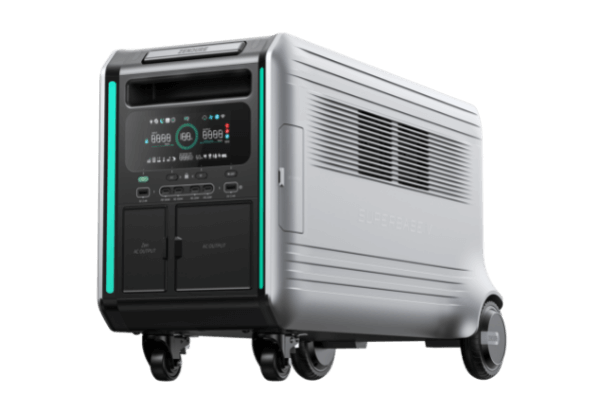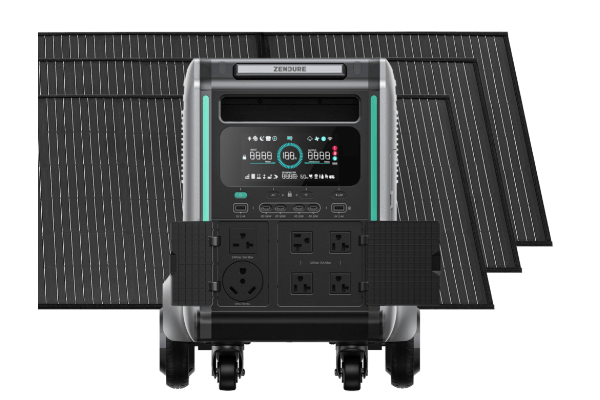The Guide to Capacity and Efficiency of Portable Chargers


Portable chargers, a.k.a. power banks or external batteries have been in the market for years and have become a household item for almost every family. However, average consumers and even people in the industry are still confused about the basic concepts of this product, such as the capacity and efficiency. Some manufacturers use wrong or exaggerated data to mislead customers in their own interests. As the founder of Zendure, I'd like to clear up the doubts and misconceptions surrounding these very important factors.
Before we start, let's introduce some basic concepts.
Capacity: A battery's capacity is the amount of electric charge it can deliver at the rated voltage. The more electrode material contained in the cell the greater its capacity. A small cell has less capacity than a larger cell with the same chemistry, although they provide the same open-circuit voltage. Capacity is measured in amp-hours (aH). For power banks, milliampere hour (mAh, equals to one-thousandth of an ampere hour) is more commonly used.
Voltage, electric potential difference, electric pressure or electric tension (formally denoted ∆V or ∆U, but more often simply as V or U, for instance in the context of Ohm's or Kirchhoff's laws) is the difference in electric potential energy between two points per unit electric charge. The voltage between two points is equal to the work done per unit of charge against a static electric field to move the test charge between two points. This is measured in units of volts.
Current, measured in amperes or amps (A) is the rate of electric flow which, if maintained in two straight parallel conductors of infinite length, of negligible circular cross-section, and placed one meter apart in vacuum, would produce between these conductors a force equal to 2×10−7 newton per meter of length.
Energy, measured in watt-hours (Wh) or joules (J), is a measure of the amount of work, or change, that can achieved. One watt-hour is equivalent to 3,600 joules. If the energy is being transmitted or used at a constant rate (power) over a period of time, the total energy in kilowatt-hours is the power in watts multiplied by the time in hours. The kilowatt-hour, equal to 1,000 watt-hours, is commonly used as a billing unit for energy delivered to consumers by electric utilities. For power banks, watt-hour (Wh) is more commonly used.
Power vs. Energy: The terms "power" and "energy" are frequently confused. Power is the rate at which energy is generated or consumed and hence is measured in units (e.g. watts) that represent energy per unit time. For a power bank, the power is the maximum flow of energy that it can output, which equals to the voltage multiplied by the current. For instance, the power of a 10,000mAh power bank that can output 2.4A at 5V has a power of 12W. However, energy is the capacity times the voltage, so it's 10,000mAh*3.7V/1000=37Wh.
During Zendure's Kickstarter campaign, we introduced a new term called Total Energy Conversion Rate (TECR). It means the total actual energy that a user can get from the power bank, divided by the rated energy capacity of it. This is the most accurate way to measure the efficiency of a power bank.
Now let's look at some of the common misconceptions.
Misconception 1: Rated capacity is the actual capacity you will get
This is the most common misconception that a first-time power bank user has. A typical power bank consists of the following parts: internal battery cells, a PCB (printed circuit board) with voltage conversion and power management system, USB Ports, and the exterior shell. The rated capacity normally refers to that of the internal battery cells at the nominal voltage. For instance, if the power bank has two cells inside with each cell of a capacity of 3350mAh at 3.63V, it's rated capacity is 6700mAh at 3.63V. From here, there's still a long way to the actual total energy that can be delivered to your devices.
Misconception 2: Conversion Rate is the same as Efficiency
So the more educated consumers usually fall into this trap. A lot of power bank manufacturers educate consumers with this so called "conversion rate" concept. However, there are are lot of manipulations with this concept.
Manipulation type A: Some companies claim that their power banks have an conversion rate of over 90%, but what they won't tell you is that they're only referring to the efficiency of the PCB, not the whole unit. Internal resistance takes some of the energy out of the system. The batteries themselves usually hold a charge at about 3.7 volts, while the devices that they power require 5 volts. This transformation takes energy out of the system, as do other circuit operations. Manufacturers mislead customers by only providing a small piece of the total energy conversion picture.
Manipulation type B: This is actually a more misleading way and it's far harder to explain or expose. Some companies would print on their packaging the following numbers:
Rated Capacity: 16,000mAh 3.6V
Output Capacity: 10,200mAh 5.1V
Conversion Rate: 16000*3.6/10200*5.1>90%
This is really misleading. Actually, 10200mAh refers to the capacity that it can charge the cell phone at, and the cell phone battery is normally 3.6V too, so, simple math here:
Total rated energy: 16000mAH * 3.6V = 57.6Wh
Energy Usable: 10200mAh * 3.6V = 36.72Wh
Actual TECR: 36.72Wh/57.6Wh=63.75%.
How to calculate the actual capacity before you buy a power bank?
Congratulations. If you have read thus far, it means you have a basic understanding of what energy efficiency mean for power banks. However, this step is crucial for you to really understand the final answer.
As we know, Zendure A-Series batteries have an 80% TECR. This means, to approximate how many times a Zendure battery can charge your device, multiply the battery's capacity by 0.8, and then divide it by the capacity of your device. While this is true in most cases, you need to understand that this formula assumes that the device's nominal voltage is about 3.7V, is charged at 1A in a 25°C environment, and is powered off and not in use when being charged. Actual results may vary slightly depending on whether the device is in use, output used, temperature, how much heat the device's battery generates, the condition of the device, etc. So if you are using the power bank in a very cold place, charging the device at 2A, and if your phone also happens to be a very old phone with a worn-out battery, the TECR you might get would be much lower.
I hope that this has helped you gain a better understanding of the science behind power banks, so you can make an informed decision when choosing a product that will work best for you.























Hinterlassen Sie einen Kommentar